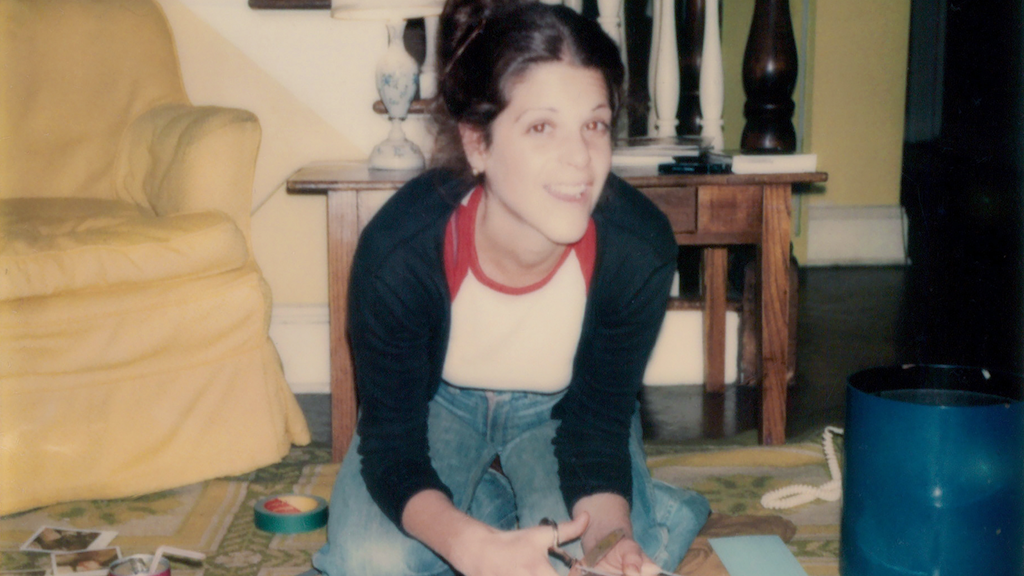
When we think of the greatest female TV comedians, a few names immediately spring to mind: Lucille Ball, Mary Tyler Moore, Carol Burnett.
In my mind, Gilda Radner should be on that list—and the fact that her name is not quite uttered in the same breath as those luminaries has always irked me. To me, she’s a towering figure—one of the most fearless, funny, and original comedians to ever grace the small (and later big) screen. (It’s a minor irritant, but I also feel like the woman should be a drag icon at this point! If drag queens love to trot out their Liza Minnelli and Cher and Carol Channing impressions, why on earth wouldn’t they want to channel Roseanne Roseannadanna or Emily Litella?)
I’m hoping that Love, Gilda, the new biographical documentary on her life, will help secure Radner’s place on that comedienne’s Mount Rushmore. The film, lovingly directed by Lisa D’Apolito, is aided immeasurably by the voice of Radner herself, through audiotapes she recorded while working on her autobiography, It’s Always Something. This gives the film a sense of haunted intimacy—as though Radner is narrating it posthumously. (This is vastly preferable to the creepy technique employed in the otherwise excellent Roger Ebert biopic, Life, Itself, where an actor doing an Ebert impression narrated the story.)
As the film starts, we see a lot of famous contemporary comedians—Melissa McCarthy, Amy Poehler, Bill Hader, Maya Rudolph—sift through the audiotapes and diary entries that Radner left behind, gingerly handling them as though they are sacred objects. “I can’t believe this is her handwriting,” Poehler says, with awe.
This is a classic biopic that goes through Radner’s life—growing up comfortable in the tony suburbs of Detroit, majoring in drama in college, through her years as an improv comedian, and then as one of the original Not Ready For Primetime Players (she was actually the first person cast). It follows her film career, her marriages, including one to the great love of her life, Gene Wilder, and her untimely death, at age 42, of ovarian cancer. The film shows us her uncanny radiance, inventiveness, and charm, but doesn’t shy away from her struggles with depression, bulimia, and anorexia.
It seems that there were two defining traumas of Radner’s childhood that she carried throughout her life. For one, she was an overweight child, much to her mother’s dismay. Her mother, a beauty, actually put little Gilda on diet pills. (It’s no wonder she ended up with an eating disorder.) Then, her beloved father died when she was just 14, which might explain her neediness when it came to men (she was rarely without a boyfriend, and most of the relationships were messy).
It’s a cliché, to some extent, but also true: She retreated into jokes and voices and characters to fend off her own demons. When she was on stage, improvising and making people laugh, was when she felt most alive.
For comedy fans, this film is a true treasure trove. Along with all the present-day comedians I mentioned above, the film features interviews with Martin Short, Lorne Michaels, Paul Schaefer (who adored Radner and seemed to essentially serve as her personal pianist), Chevy Chase, Larraine Newman, and Garrett Morris. (I was disappointed that Jane Curtin, Dan Aykroyd, and particularly Bill Murray—who dated Radner—were not interviewed.) It gives a wonderful sense of the sensation that SNL became in the 70s, when the entire cast was treated as rock stars, with the attendant sex and drugs and rock ’n roll. And we get to see the mind-blowing interconnectivity of all this wonderful comic talent—before heading to SNL, for example, Gilda worked with Bill Murray, Harold Ramis, John Belushi, and director Ivan Reitman on a National Lampoon radio show. Love, Gilda gives us a window into what, in retrospect, feels like the Golden Age of counterculture comedy.
We also get to see Radner at work—the film includes snippets of all her indelible SNL characters (a film critic friend complained that those clips were too short; fair point, although they are all available on YouTube), plus scenes from her one-woman show, and other comedy productions. One of my favorite scenes shows how adept a comic mind she was: In an SNL sketch where she’s playing Howdy Doody’s wife, Debbie Doody, the audience is not responding properly. So Radner spontaneously drapes herself all over scene partner Larraine Newman, tangling her with Debbie’s strings, much to the audience’s roars of approval. She was relentless until she got that laugh.
After SNL, Radner made some mostly forgettable movies, but that was how she met Wilder. Although she was married to SNL band leader G.E. Smith at the time, she confesses that it was “love at first sight.” They adored each other and some of the film’s most tender scenes show Wilder pampering Radner as she gets treatment for cancer in the hospital.
Wilder also encouraged Radner to have a healthier relationship with food, and he thought she was always beautiful, even after her hair fell out due to chemotherapy. While the film ends on an inevitably sad note—bring lots of Kleenex—I felt somewhat heartened by the fact that before she died she finally got the unconditional love that she deserved.
